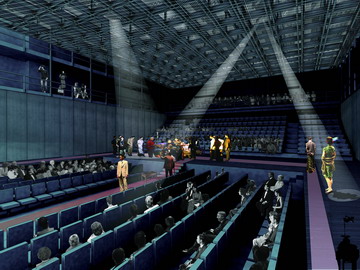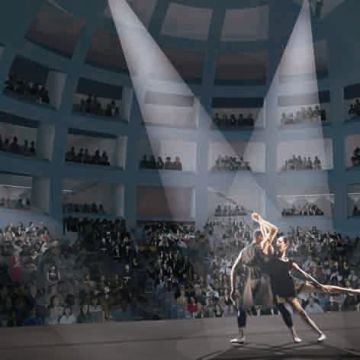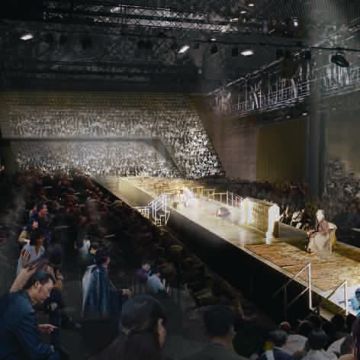Taipei Performing Arts Centre

(By OMA/ Frans Parthesius © All rights reserved)

(By OMA © All rights reserved)

(By OMA © All rights reserved)

(By OMA © All rights reserved)

(By OMA © All rights reserved)

(By OMA © All rights reserved)
Location
Taipei, Taiwan
The site of TPAC locates in a dense and vibrant part of Taipei next to the Shi Lin Night Market.
Architect
Rem Koolhaas, David Gianotten,Ole Scheeren the Office for Metropolitan Architecture, Stedebouw B.V., (OMA), Rotterdam, the Netherlands (Ole Scheeren no longer works for OMA )
Artech Artechitects, Taipei, Taiwan
Background Information
Although the essential elements of the theatre– stage, proscenium, and auditorium– are more than 3,000 years old, there is no excuse for the contemporary architectural disregard of theatrical innovation. The Taipei Performing Arts Centre (TPAC) takes the opposite approach: experimentation in the internal workings of the theatre, producing (without being conceived as such) the external presence of an icon.
Taipei Performing Arts Centre is a competition project of the Department of Cultural Affairs, Taipei City Government, and scheduled completion in 2015.
Capacity
Square Measure: Approx. 50,000 sqm
Grand Theater: 1,500 seats
Multiform Theater: 800 seats
Proscenium Playhouse: 800 seats
Super Theatre: Transformed by coupling the Multiform and Grand Theatres
Design Concept
TPAC consists of three theatres: the Proscenium Playhouse, the Grand Theatre, and the Multiform Theatre, each of which can function independently and autonomously. The theatres plug into a central cube which consolidates the stages, backstages and theatre services into a single and efficient whole. This arrangement allows the stages to be modified or merged for unsuspected scenarios and uses. The Multiform and Grand Theatres are aligned on the same axis, divided only by several layers of movable panels. Open these, and the two stages and auditoriums are coupled into a massive, factory-like environment.
Through its compactness, the building has four different “faces”. The faces are defined by the theaters that protrude from the cube and float above the public plaza. The cube is lifted from the ground and the street extends into the building. Theater-goers mix in the lobby, and as they gradually ascend, separate into different routes to each theater.
Future Prospects
TPAC is not a token sign of culture but rather a sophisticated tool equal to the ambition of Taiwan’s theatre directors. The theatrical potential of the transformation of Super Theatre is exhilarating not only in terms of scale, but also in terms of the possibility of unconventional relationships between audience and stage(s). Existing conventional works can be re-imagined on a monumental scale, and new, unimagined forms of theatre will flourish in the Super Theatre.
In TPAC, the equally impressive and choreographed backstage performance is exposed through a trajectory that offers controlled views into these spaces. In the Public Loop, both audience and general public—even those without a theatre ticket—can travel along escalators, stairs, and an elevator through the entire cube. This route links several destinations including a café, a roof terrace, and a viewing deck at the top of the cube. The Public
Loop not only allows the audience to holistically experience theatre production but also allows Theater to engage a broader public.